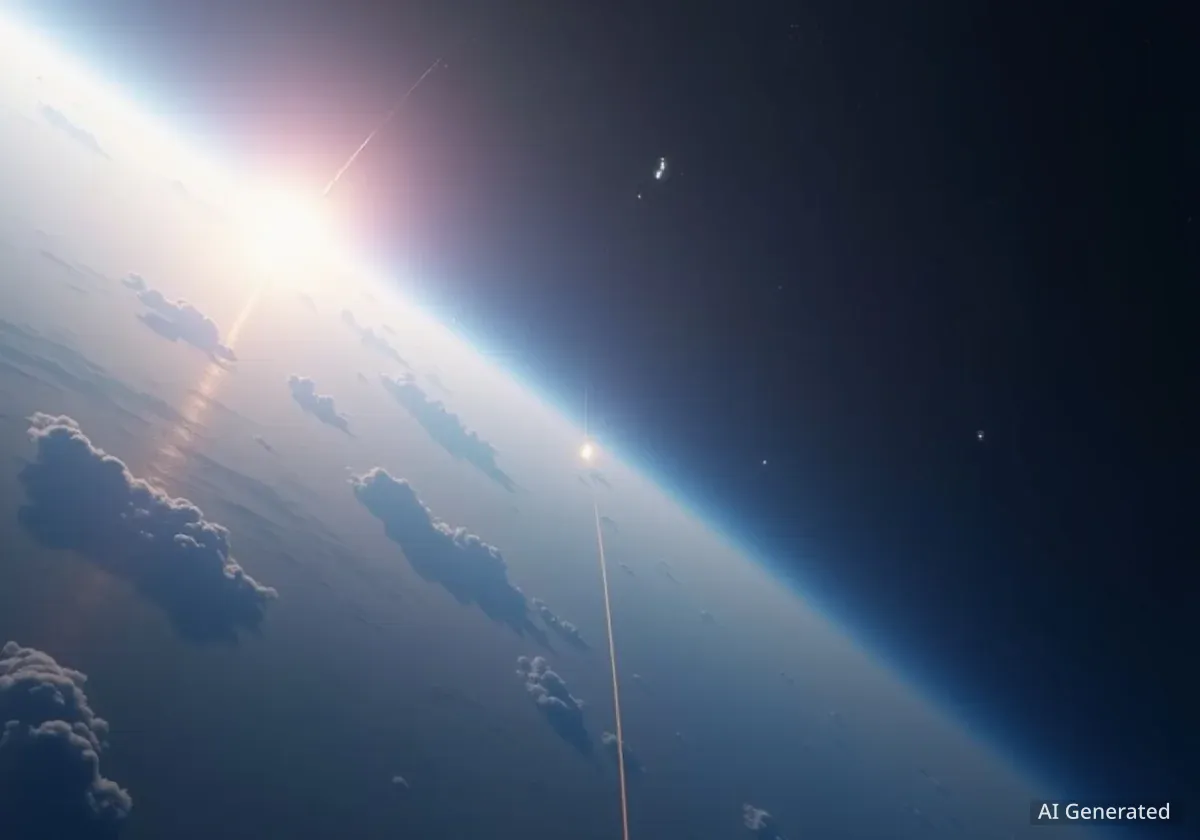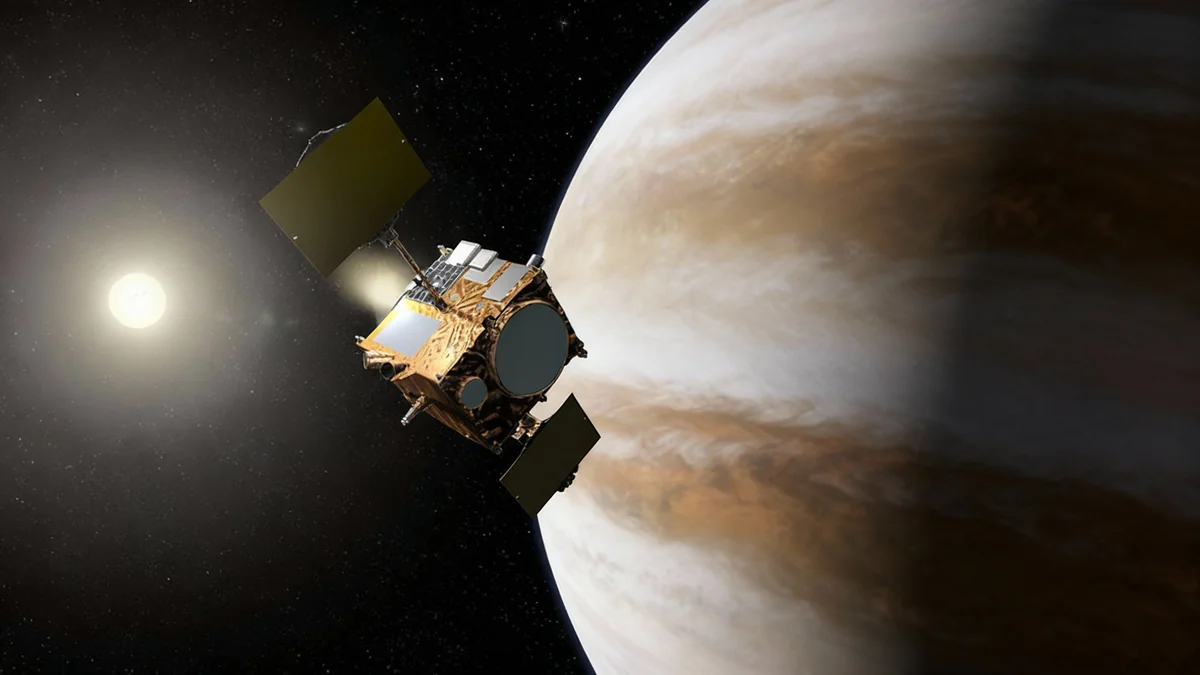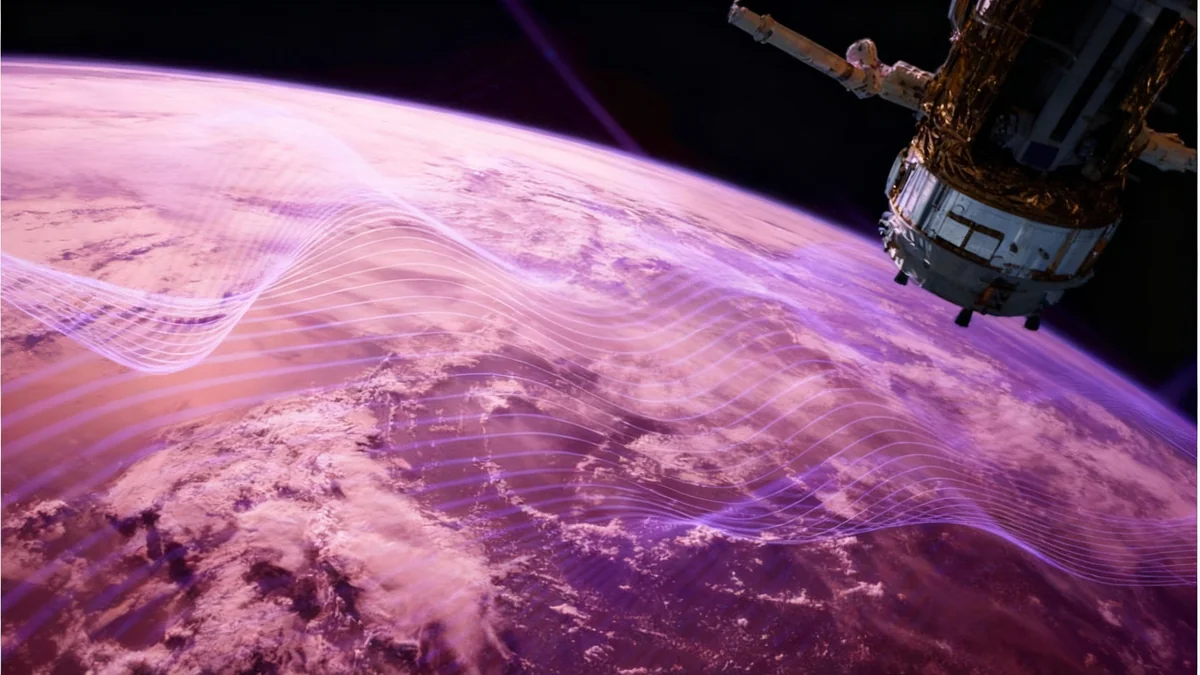The rapid expansion of the global space industry, marked by an unprecedented number of rocket launches and satellite deployments, is raising significant concerns among scientists about the environmental effects on Earth's upper atmosphere. As companies launch thousands of satellites, researchers are scrambling to understand the long-term consequences of rocket emissions and the materials left behind when spacecraft reenter and burn up.
Key Takeaways
- Rocket propellant consumption has more than tripled since 2019, leading to increased emissions in the upper atmosphere.
- Scientists warn that black carbon (soot) from launches could have a climate impact up to 500 times more potent than aviation emissions at lower altitudes.
- For the first time in 2024, the mass of aluminum deposited in the atmosphere from reentering satellites is projected to exceed that from natural meteor sources.
- Satellite operators face a dilemma: deorbiting satellites quickly to avoid space debris may contribute to unknown atmospheric damage.
An Industry Accelerating at Unprecedented Speed
The scale of modern spaceflight activity is staggering. SpaceX recently launched its 10,000th Starlink satellite and has already conducted 136 orbital launches this year alone. In less than a year, its Falcon 9 rocket surpassed the total number of launches the Space Shuttle performed in its entire 30-year history. This surge, mirrored by activities in China and other nations, is fueling a new era of space-based services but also brings environmental questions into sharp focus.
While the risk of in-orbit collisions, known as the Kessler Syndrome, has long been a topic of discussion, attention is now turning toward the terrestrial impact. The sheer volume of launches and the subsequent reentry of thousands of satellites are introducing new variables into our planet's delicate atmospheric chemistry.
A Shift in Focus
For decades, the primary environmental concern related to space was orbital debris. However, the rise of mega-constellations requiring thousands of launches and planned deorbits has shifted the conversation to include atmospheric pollution, ozone depletion, and climate effects.
The Hidden Cost of Reaching Orbit
Researchers are increasingly focused on what rockets leave behind on their way up. A project at the German Aerospace Center (DLR) is modeling the emissions from global launches to quantify their atmospheric impact. Moritz Herberhold of DLR highlighted that total propellant use by rockets has more than tripled since 2019, a trend expected to continue as larger vehicles enter service.
The primary concern is black carbon, or soot, which is deposited much higher in the atmosphere by rockets than by aircraft. According to some analyses, this high-altitude soot could be up to 500 times more potent in its warming effect than the same amount emitted by conventional aviation.
Early modeling from the DLR project suggests that black carbon emissions from the roughly 250 annual launches today could already be having a significant climate impact, though further climate modeling is needed to confirm the precise effects.
This potential for harm has been echoed by other experts. Michele Bannister, a senior lecturer at the University of Canterbury in New Zealand, has researched the impact of launch emissions on the ozone layer. She warned that the projected growth in launches could lead to noticeable damage.
“We will see damage to the ozone layer, and we will see that most severely over latitudes like New Zealand,” Bannister stated at a recent aerospace summit, framing the issue as an “engineering problem” that requires an “engineering solution.”
What Goes Up Must Come Down
The other side of the equation is the reentry of thousands of satellites. To mitigate the growing problem of space junk, operators are encouraged to deorbit their satellites at the end of their lifespan, ensuring they burn up completely in the atmosphere. While this prevents debris from reaching the ground, it means a growing amount of vaporized metals and composites are being deposited in the upper atmosphere.
José Pedro Ferreira, a researcher at the University of Southern California, presented findings indicating a critical milestone has been reached. In a talk at the Summit for Space Sustainability, he explained his analysis showed that 2024 will be the first year where the mass of aluminum deposited from satellite reentries surpasses the amount from natural sources like meteors.
“This doesn’t mean that there is a negative environmental impact,” Ferreira clarified, “but there is a change in the status quo.” This alteration of the atmospheric environment is what has scientists concerned, as the long-term effects are largely unknown.
Uncertainty Plagues the Industry
The lack of concrete data is a significant challenge. Chris Young, a space sustainability lead at the UK Space Agency, revealed that recent studies commissioned by the agency highlighted this knowledge gap. One literature review concluded, “we really don’t know much about what the atmospheric impact is of reentry.”
This uncertainty leaves satellite operators in a difficult position. Vijay Thakur of Eutelsat, which operates the OneWeb constellation, expressed this frustration openly.
“The difficulty that I have as a responsible operator is, in this particular case, I don’t know what to do,” Thakur said. “It may be that I’m dumping too much of the wrong material—aluminum and anything else—somewhere in the atmosphere.”
He contrasted the situation with the issue of satellite brightness affecting astronomy, where clear metrics exist. For atmospheric impact, there are no established thresholds or guidelines, leaving companies like his feeling “lost” as they plan to launch their next-generation constellations by 2026.
The Search for Solutions and Standards
Despite the concerns, the consensus among researchers and industry players is not to halt launches but to accelerate research. There is a strong call for more data collection, from atmospheric sampling to sensors placed on reentering spacecraft, to build more accurate models.
Regulatory bodies are beginning to take notice. The European Commission has released an initial draft of its Product Environmental Footprint Category Rules for the space sector (PEFCR4Space). This initiative aims to create a standardized methodology for measuring the full lifecycle environmental impact of space activities, from manufacturing to disposal.
Vera Pinto, a policy coordinator for the European Commission, explained the goal during the summit. “If we can measure the impacts of space activities, we can manage them,” she said. “And if we can manage them, then we can make space activities more sustainable.”
The guidelines, which are open for public comment and won't be finalized until the end of 2027, represent a long-term effort. For now, the space industry continues its rapid expansion into a realm of scientific uncertainty, balancing the benefits of orbital technology against an environmental cost that is not yet fully understood.





